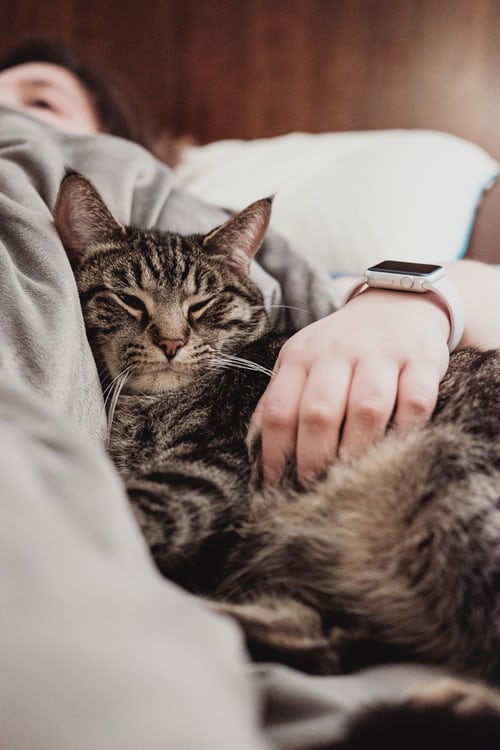Cats are our companions at home, but to fleas, they are a tasty snack.
The thought of cats catching flies can be stressful to pet owners. Fleas feed on the blood of animals, especially our lovely cats making them uncomfortable and itchy. Fleas may also carry diseases such as bartonella and tapeworm.
Surprisingly, considering their size, fleas jump further than any other insect. If people had the same ability to jump like these fleas, they would jump 160 feet high and 295 feet across.
If you’ve had fleas in your home, you know of the dreaded feeling when you first see the signs. The thought of it can make you scratch your body and make you start jumping in the air on seeing anything that resembles the fleas.
You’ve searched the internet for solutions. You’ve asked from friends and family for information about the life cycle of fleas and what to do when you spot it on your cat. You’ve probably heard that if you’ve seen one, then they are many others already breeding in your home.
So how do you know that your cat has fleas, and how do you get rid of them? Read the info below to understand what you need to know about flea medications for cats.
How to Know If Your Cat Has Fleas
If you’re unsure whether your lovely cat has fleas, check for these signs:
Behavioral signs
In severe cases, you can see fleas jumping and moving on and off from your cat’s body. Your cat can also become restless and scratching and chewing some parts of its body. Scratching the ears and shaking of the head can also mean that your cat is infested by fleas.
Check Your Cat’s Skin and Fur
You’ll need to look very carefully to see fleas on your cat’s body. Fleas are small, flat-bodied, dark brown insects. They become lighter as they ingest more blood.
Let your cat lie on his back and check parts of the body that fleas can hide. Some of the notorious areas are groin and armpits. Also, check the cat’s ears more carefully for signs of scratching, blood, redness, or dirt, as these can be signs that your cat has fleas.
The skin around your cat’s belly, groin, or base of the tail can appear reddish and bumpy, particularly if the cat is scratching a lot. You’ll also notice hair loss in areas that have been scratched excessively.
Most people are shocked when they find fleas on their pets. Even a clean and well-maintained home can still have fleas. That’s shocking, right? The fleas that you see with your eyes are only the tips of the iceberg as there are way more fleas you are not being able to visually detect.
Others are in the immature stages, like the eggs, or larvae, that can’t be seen when developing.
How to Treat Your Cat
After identifying what’s ailing your cat, now it’s time to find a solution to this problem. It can be quite challenging to kill fleas, hence the many flea killing products on the market.
If you’ve decided to comb through your cat’s hair using a flea comb, be sure to have a bowl of soapy water with you. While fleas can jump out of the water, the presence of soap in there helps to stop them. But you should be quick as they can jump off the comb.
You can also bathe your cat using a specially-formulated flea shampoo. It is important to inspect and comb your cat every week to monitor a flea infestation.
The use of flea preventives discourages fleas from coming back. For effective flea prevention, consider using a topical, collars or oral products that lasts anywhere between 1 month and 8 months. Be sure to select a preventive method that best suits you and your cat.
In addition to flea protection and prevention, you should always be vigilant to ensure that all fleas are eliminated. But you should be patient as it will take a couple of months to get rid of fleas completely. Spotting one or two fleas in your room does not mean that the products aren’t effective.
The most important thing is to ensure that you administer treatment as well as prevention products as required, check your pet at least once a week for any signs of scratching or itchiness and control who your cat interacts with.
Treat All Other Pets and Environment
Fleas do not just feed on cats. Your other pets in the house are also prone to a flea infestation. Be sure to treat all other pets in your home to prevent the infestation from spreading and to prevent them from coming back in the future.
Treating your home environment is also a great way to reduce flea infestation.

